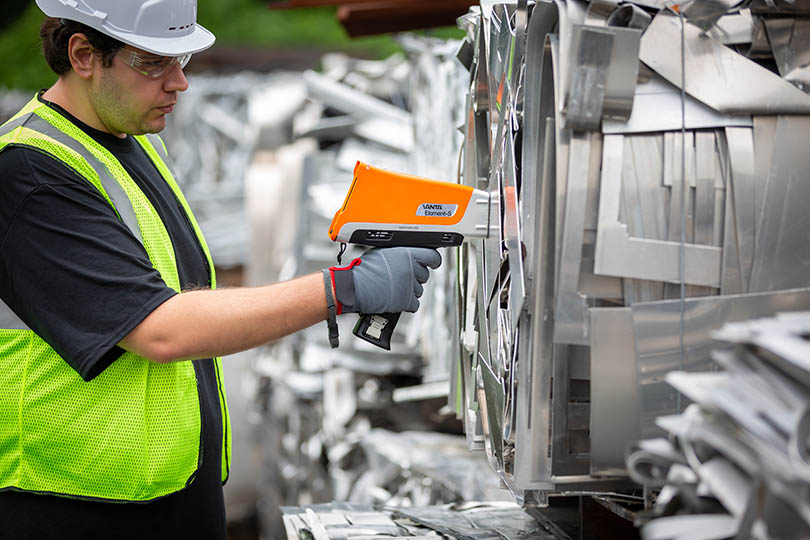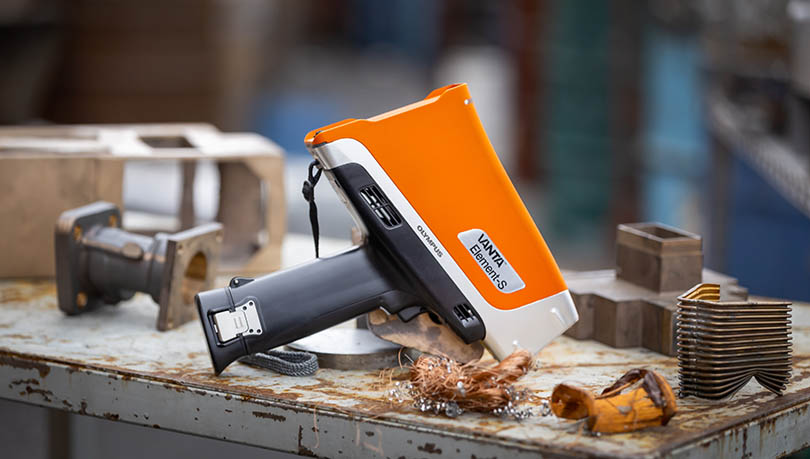Deciding between a silicon drift detector (SDD) or PIN detector is one of the first choices you need to make when buying a handheld XRF instrument. For instance, the two instruments in our affordable XRF series have different detectors: the Vanta Element™ analyzer is built with a PIN detector, while our Vanta Element-S analyzer is equipped with an SDD.
Read on to learn the key differences between these detectors and answer questions that can help you decide which one you need.
SDD vs. PIN: What’s the Difference?
SDDs are a newer technology and can count approximately 10x more X-rays per second than PIN detectors. SDD resolution is also about 40 eV lower than PIN. However, the SDD’s increased capability comes with an increased cost. As you determine which detector is right for you, think about how you intend to use your XRF analyzer. Here are two important questions to ask:
- Do you need to measure any light elements, such as magnesium (Mg), aluminum (Al), silicon (Si), phosphorus (P), sulfur (S), chlorine (Cl), potassium (K), or calcium (Ca)?
These lighter elements are only quantified with SDD instruments. Many people mistakenly believe this means you can’t sort aluminum alloys with a PIN detector. However, you can sort many aluminum grades based on the heavier element content (such as copper, chromium, or iron) with a PIN detector. Finer distinctions, such as distinguishing between aluminum 6061 and 6063 that only vary by magnesium level, require an SDD.
- Do you need low-level LODs?
The limit of detection (LOD) is typically about 3x lower for an SDD. The higher count rate also makes the SDD more precise and more sensitive than a PIN detector.

The Next Step—Deciding Between Analyzers
We hope these questions helped you decide on a detector—this means you’re one step closer to determining the right analyzer for you.
If you need an SDD, then you may want to check out our Vanta Element-S handheld XRF analyzer for affordable alloy ID with light element detection.
Fast and precise, the analyzer can identify Mg, Al, and Si in seconds. Its SDD can also distinguish similar alloy grades like 303 stainless steel from 304, and aluminum 6061 or 6063 from 1100. Ideal for scrap recycling, basic PMI, metal manufacturing, and precious metals, the analyzer can effectively measure ferrous metals, aluminum, copper, stainless steel, nickel, and gold karats.
If you need a PIN detector, then take a closer look at our entry-level Vanta Element analyzer for affordable alloy ID.
No matter your choice, you can rest assured that both analyzers come with the essential features the Vanta™ series is known for: speed, reliability, ruggedness, connectivity, and smartphone-like ease of use.
This means you can benefit from features like:
- IP54 rating for protection from dust and moisture
- Drop tested (MIL-STD-810G) to protect against falls and reduce the need for costly repairs
- Axon Technology™ for fast, reliable testing
- Cloud connectivity and modern data sharing with the Olympus Scientific Cloud™
If you’re still unsure about the differences between SDD and PIN detectors, or have any other XRF questions, don’t hesitate to reach out! And be sure to read our helpful resource on choosing an analyzer, Which XRF Analyzer Is Right for Me?
Related Content
X-Ray Fluorescence E-Book: Cutting Out the Noise
Which XRF Analyzer Is Right for Me?
Vanta Element Handheld XRF Analyzer
Get In Touch

